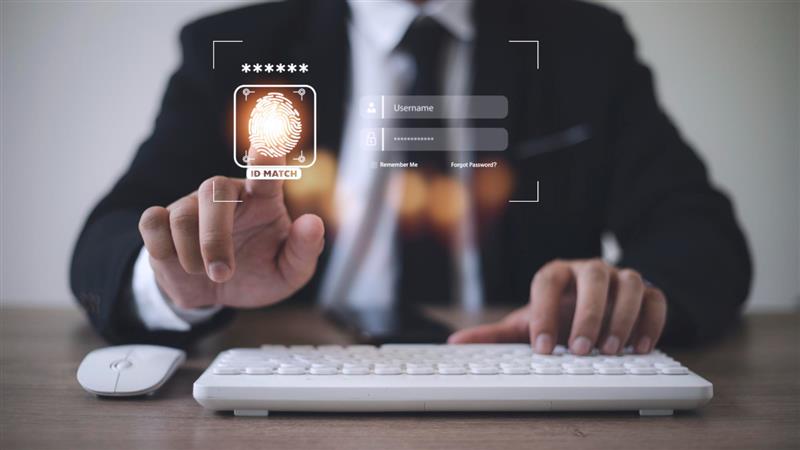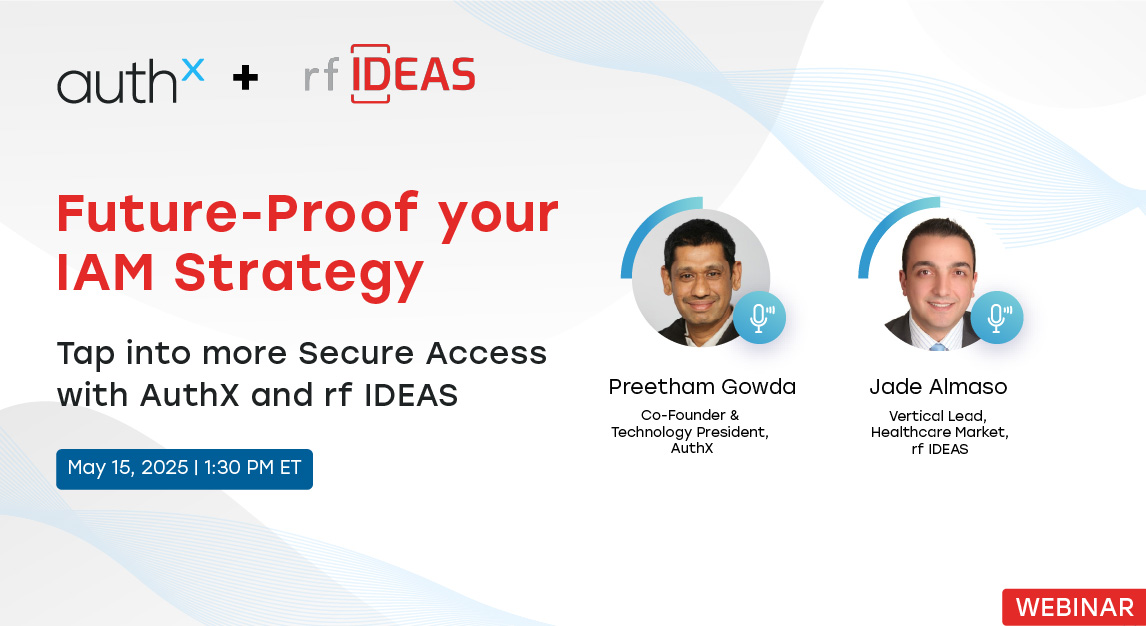Every security team we talk to shares a similar story. They know who logged in, but they are not always sure who is really behind the screen. That single uncertainty has become one of the biggest risks in enterprise security today. Identity verification used to be simple. Check a document, approve access, move forward. But the world has changed. Remote work, Digital onboarding, and Passwordless systems have made the process of proving identity far more complex.
Today, attackers don’t just steal credentials; they steal people’s faces and voices. The number of fraud cases involving fake interviews, deepfakes, and social engineering has jumped sharply. Traditional verification methods are no longer enough. It is time for enterprises to move from one-time checks to continuous identity assurance, powered by biometric identity verification and contextual signals. The shift is not just technical; it is cultural. Organizations must start treating verification as an ongoing process, not a gate at the start.
Trend 1: Deepfake and Synthetic Identity Fraud
The most alarming shift is the use of AI tools to create synthetic people. Attackers can generate entire identities that look and sound real. Some even use fake video calls to pass interviews or onboarding checks. We used to worry about fake documents. Now we worry about fake humans. This new kind of fraud makes identity verification in enterprises more critical than ever.
Systems must be able to detect liveness, measure facial depth, and confirm that a real person is present. Basic selfie checks or document scans are no longer reliable. AuthX addresses this by using biometric and AI-driven validation that confirms the user’s live presence during onboarding, mobile access, or password reset events. The result is stronger verification without adding friction for users.
Trend 2: Continuous and Contextual Verification
Verification cannot stop once a user logs in. It must continue quietly in the background. Imagine an employee who logs in securely but starts accessing files from a new location or an unknown device. That sudden change should trigger additional verification. This approach is known as continuous identity verification.
It works by monitoring behaviour, device posture, and location patterns. When the risk level changes, the system adjusts the verification strength. This model replaces static MFA prompts with adaptive verification. Instead of interrupting users unnecessarily, it reacts only when behaviour seems unusual.
AuthX supports this model through passwordless and biometric verification that adapts to user context. It helps organizations maintain a seamless experience while staying alert to risk.
Trend 3: The Passwordless and Passkey Shift
The move to passwordless systems is one of the biggest changes in modern identity management. It promises convenience and better security, but it also shifts the trust boundary.
In a passwordless identity verification model, trust begins when a credential is created and bound to a device. If that first step is weak, everything after it is at risk.
Passkeys and FIDO2 standards now play a major role in securing that process. They allow credentials to be linked to verified users and their devices, not stored in databases where they can be stolen.
AuthX ties biometric verification directly to passwordless credential issuance. This ensures every passkey belongs to a real, verified person, creating a strong trust anchor for all future logins.
Trend 4: Helpdesk Attacks and Verified Support Access
Attackers no longer focus only on logins. They also target helpdesks. By pretending to be an employee, they convince support staff to reset MFA or issue new credentials.
One wrong reset request can expose sensitive data or grant full system access. That is why verified support access is becoming an essential part of enterprise identity verification.
AuthX helps secure this weak spot by allowing users to confirm their identity through mobile biometrics before any support action is taken. This adds a quick but reliable verification layer that prevents impersonation attempts at the helpdesk level.
Trend 5: Tightening Regulations and New Standards
Regulatory expectations around identity proofing are increasing. The U.S. NIST SP 800-63-4 draft introduces higher standards for document validation and live verification.
In Europe, eIDAS 2.0 promotes the use of digital wallets and verifiable credentials for cross-border identity trust. Financial and healthcare regulators are also demanding stronger identity controls.
For enterprises, this means that compliance cannot wait until audits. Verification systems must be designed with these rules in mind from the start.
AuthX helps organizations meet these standards by offering adaptive verification workflows that combine biometric checks, contextual analysis, and encrypted credential management.
Trend 6: Decentralized Identity and Verifiable Credentials
Decentralized identity gives people control over their verified credentials. Instead of sending copies of ID proofs repeatedly, users can share verified tokens that confirm who they are.
For enterprises, this approach reduces cost, speeds up onboarding, and improves privacy. It also aligns with global digital identity frameworks being developed under eIDAS 2.0 and similar programs.
AuthX enables this vision through AuthX Vault, a secure credential storage system that allows verified identities to be reused safely across applications and devices. It keeps data private while maintaining the assurance level enterprises need.
Trend 7: AI-Driven Risk Scoring and Behavioural Analytics
AI is now being used not just by attackers but by defenders too. Machine learning models can recognize small behavioural changes that signal risk, such as unusual typing rhythm, navigation speed, or device usage.
These signals form a behavioural identity profile for each user. When the system notices a deviation, it can trigger additional verification automatically.
This capability transforms static verification into a living process. It strengthens security without hurting usability.
AuthX integrates behavioural analysis into its enterprise identity verification engine, allowing organizations to detect anomalies before they cause damage.
Trend 8: Privacy-Preserving Verification
The more we verify, the more data we collect. That makes privacy a key concern.
New methods like zero-knowledge proofs and encrypted biometric matching are helping enterprises verify identity without exposing personal data.
AuthX follows a privacy-first design by storing encrypted biometric templates and credentials in AuthX Vault. Verification happens in secure environments, reducing both risk and liability for organizations.
Trend 9: The Convergence of Identity Verification and Access Management
Identity verification and access management used to be separate. One confirmed who you are; the other decided what you could do. That separation is disappearing.
As organizations move toward passwordless and adaptive access, the two areas are blending into one lifecycle. Verification now extends across the full user journey, from onboarding to daily access and eventual offboarding.
AuthX unifies verification, MFA, and access management in a single adaptive platform. This helps security teams manage all identity interactions under one consistent policy.
The Enterprise Trust Stack
All these trends point toward a new structure for enterprise security. I call it the Enterprise Trust Stack.
It includes:
- Verified identity at the time of enrolment
- Continuous, contextual verification during sessions
- Adaptive MFA for risk events
- Verified helpdesk interactions
- Decentralized and privacy-preserving credentials
This layered approach turns verification into an ongoing assurance system instead of a one-time event. It makes enterprises more resilient and users more confident in every interaction.
“Identity verification isn’t a checkpoint anymore; it’s a continuous trust process. Enterprises that realize this shift early will stay ahead of evolving threats.”
Preetham Gowda, AuthX
Building Trust in the Passwordless Era
The conversation around identity has changed. It is no longer just about keeping intruders out. It is about building digital trust that lasts.
As passwordless access becomes standard, enterprises must make sure the people behind those devices are verified, trusted, and continuously monitored for risk.
AuthX brings these principles together with its unified platform for passwordless identity verification, biometric authentication, adaptive workflows, and secure credential management.
The goal is simple: to help organizations move from passwords to trust. Because real security is not just knowing who logged in but being certain that the person remains who they claim to be every moment after.
FAQs
Why is identity verification more critical for enterprises in 2025?
Because attacks have evolved beyond stolen passwords. Deepfakes, synthetic identities, and social engineering make it essential for enterprises to verify not just credentials but the real person behind them.
How does continuous identity verification improve security?
It monitors user behaviour, device posture, and context throughout a session. When something unusual occurs, it triggers adaptive re-verification, strengthening protection without disrupting users.
What role do biometrics play in modern identity verification?
Biometrics provide real-time assurance that a live, verified person is accessing systems. When combined with AI and passkeys, they eliminate password risks and boost trust.
How does AuthX help enterprises stay compliant with new regulations?
AuthX integrates biometric checks, contextual analysis, and encrypted credential storage to meet global standards like NIST SP 800-63-4 and EU eIDAS 2.0, keeping enterprises audit-ready by design.














